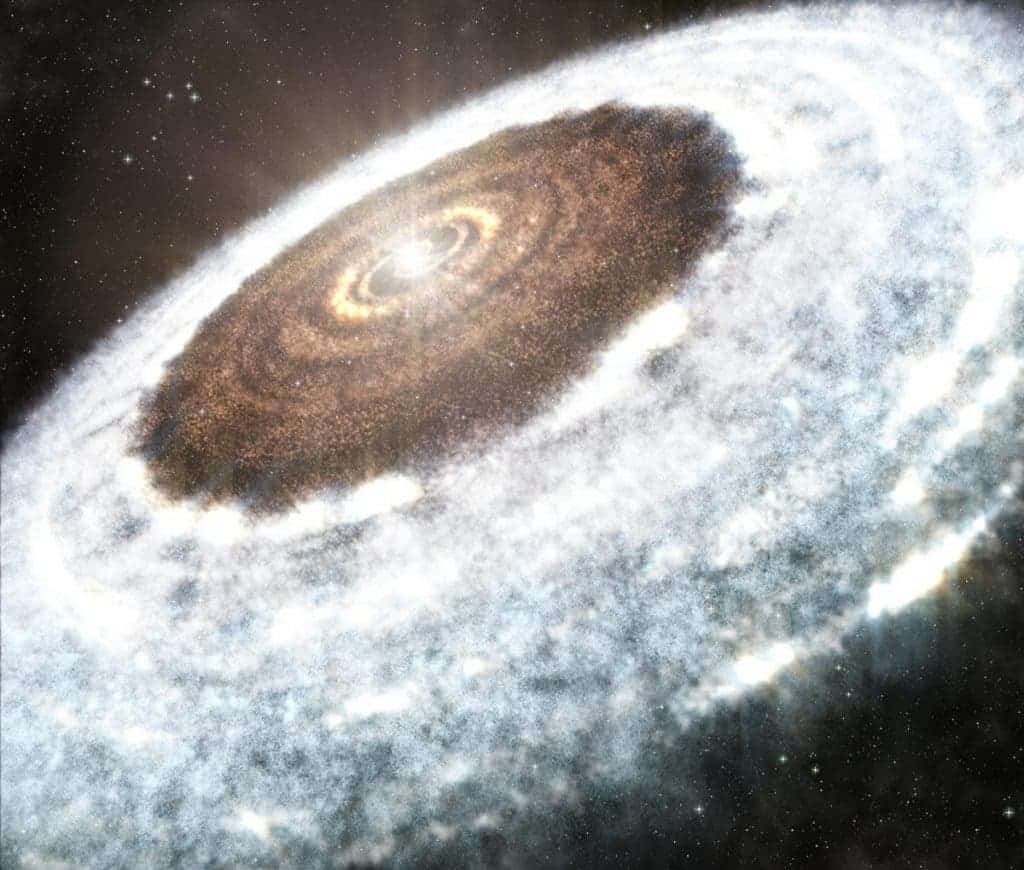
For the first time ever, astronomers have imaged a water “snowline” – the transition point around a star where the temperature and pressure are low enough to allow for water ice formation – in a protoplanetary disk.
Although water snowlines are typically too close in proximity to protostars to be directly observable, a sharp increase in the brightness of the young star V883 Orionis pushed its water snowline out farther than normal, allowing astronomers to capture it with the Atacama Large Millimeter/submillimeter Array (ALMA) telescope.
“We found what looks like a ring at 40 AU (astronomical units)” said Lucas Cieza, an astronomer at Diego Portales University, Santiago, Chile, and lead author of the paper that outlines the findings. “This illustrates well the transformational power of ALMA, which delivers exciting results even if they are not the ones we were looking for.”
The recent outburst from V883 Orionis was triggered by material from the disk making its way onto the surface of the star. It is now approximately 400 times more luminous and significantly hotter than the sun, despite it being only around 30 percent larger in size.
Water ice plays an important role in the control of dust grain agglomeration and helps these grains form into larger particles. Scientists believe that rocky planets such as Mars and Earth are favored within water snowlines, whereas the formation of gaseous planets such as Jupiter are favored outside snowlines due to the presence of ice.
“The distribution of water ice around a young star is fundamental to planet formation and even the development of life on Earth,” said Zhaohuan Zhu, an astronomer at Princeton University, New Jersey, and co-author of the paper. “ALMA’s observation sheds important light on how and where this happens in protoplanetary disks when young planets are still forming. We now have direct evidence that a frosty region conducive to planet formation exists around other stars.”
The discovery that solar outbursts can push water snowlines out past their typical radius has implications for planetary formation models, as such outbursts are believed to play a role in the evolution of planetary systems. Using data from studies such as this, scientists can better understand how planets form and evolve in our universe.
Journal Reference: Imaging the water snow-line during a protostellar outburst. 13 July 2016. 10.1038/nature18612


